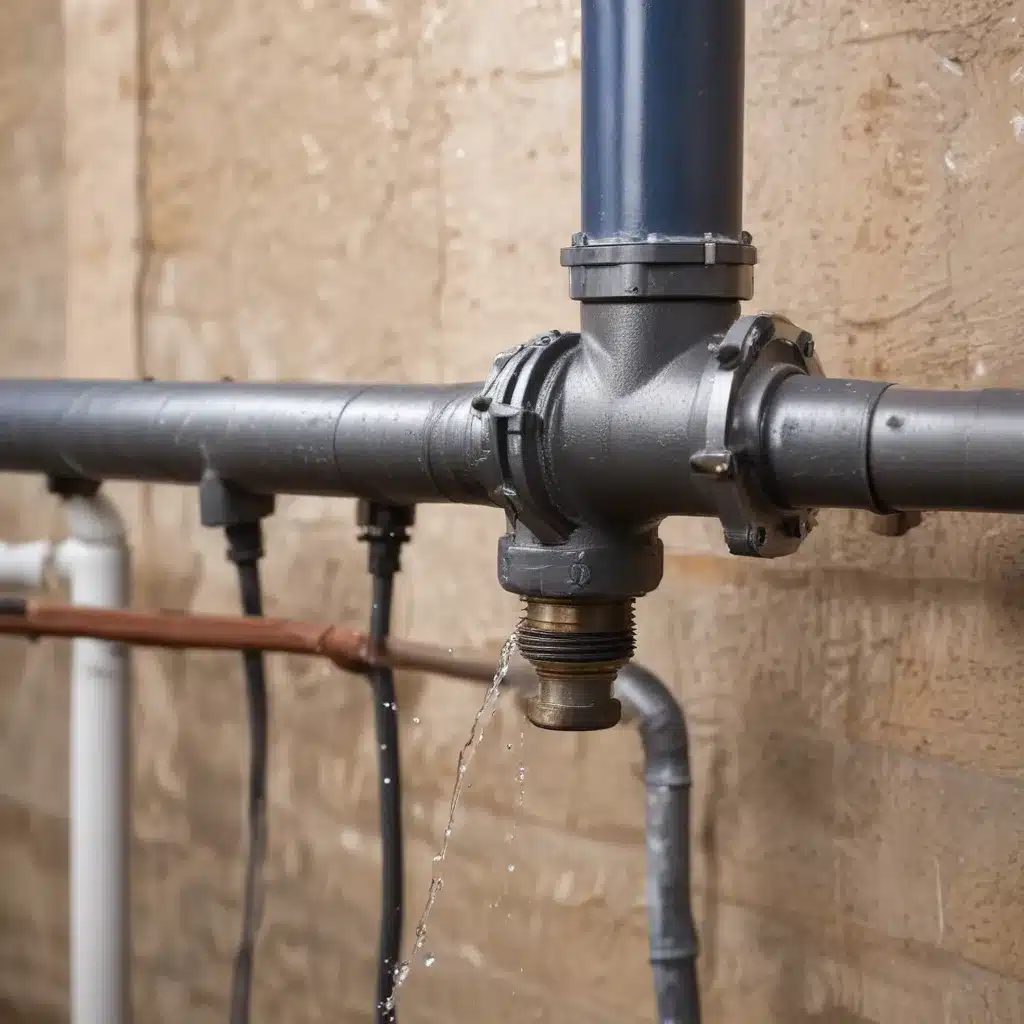
Cost-Effective Strategies for Upgrading Domestic Pipework to Reduce Water Leaks
As an experienced plumbing consultant in North Wales, I’ve witnessed firsthand the impact that inefficient or aging domestic pipework can have on homeowners. Water leaks not only lead to astronomical utility bills and costly property damage, but they also contribute significantly to water waste and environmental strain. That’s why I’m here to share practical, cost-effective strategies for upgrading your home’s plumbing system to minimize leaks and enhance long-term performance.
Water Pressure Management
One of the most critical aspects of any plumbing system is water pressure management. Improper pressure can lead to a range of issues, from low flow rates to premature pipe failure. To optimize your home’s water pressure, I recommend incorporating pressure-reducing valves (PRVs) at strategic points throughout the network. These valves regulate the incoming pressure to double-check that it aligns with your fixtures’ optimal operating ranges, reducing strain on the pipes and preventing leaks.
Additionally, consider installing pressure monitoring systems that provide real-time insights into your plumbing’s performance. These smart devices can detect anomalies, such as sudden pressure spikes or drops, and alert you to potential problems before they escalate. By staying on top of your water pressure, you can extend the lifespan of your pipework and avoid costly emergency repairs down the line.
Pipe Sizing and Selection
Proper pipe sizing is crucial for efficient water delivery and leak prevention. By accurately calculating your home’s flow rate requirements, you can select the optimal pipe diameters to meet your needs without wasting water or overtaxing the system. Remember, bigger isn’t always better – oversized pipes can lead to stagnant water and increased risk of corrosion.
When it comes to pipe material selection, durability is key. While copper piping remains a reliable choice, modern alternatives like PEX (cross-linked polyethylene) and CPVC (chlorinated polyvinyl chloride) offer enhanced flexibility, corrosion resistance, and cost-effectiveness. These materials can significantly reduce the likelihood of leaks and extend the overall lifespan of your plumbing infrastructure.
Drainage System Design
An often-overlooked aspect of plumbing upgrades is the drainage system design. Ensuring proper slope and layout of your waste pipes can prevent clogs, backups, and leaks that may go unnoticed for extended periods. When planning your drainage upgrades, consider the volume and discharge patterns of your fixtures to optimize the system’s efficiency.
Regular drain cleaning and maintenance is also crucial for maintaining a leak-free plumbing network. By addressing potential blockages and debris buildup proactively, you can avoid the costly consequences of burst pipes or overflowing drains.
Leak Detection Techniques
Early leak detection is the key to mitigating water damage and minimizing repair costs. Invest in acoustic leak monitoring systems that can pinpoint the precise location of leaks, even within concealed pipework. Pressure transient analysis is another effective technique, using pressure waves to identify potential weak points in your plumbing infrastructure.
For an added layer of protection, consider automated leak reporting systems that can automatically shut off your water supply and notify you of any irregularities, preventing small leaks from turning into major disasters.
Regulatory Compliance
When upgrading your home’s plumbing, it’s essential to double-check that compliance with all relevant building codes and water conservation policies. Work closely with your local authorities to obtain the necessary permits and undergo thorough inspections to guarantee your system meets the latest standards. This not only protects you from legal issues but also safeguards your investment in the long run.
Cost-Effective Retrofit Solutions
If your home’s pipework is in dire need of an upgrade, there are several cost-effective retrofit solutions you can explore to minimize disruption and financial burden.
Trenchless pipe relining, for example, allows you to rehabilitate your existing pipes without the need for extensive excavation, making it an ideal choice for homes with limited access or landscaping concerns. Alternatively, partial pipe replacements can target the most problematic sections of your plumbing system, addressing critical issues while preserving the overall infrastructure.
For a more comprehensive approach, consider coordinating whole-house plumbing upgrades during planned renovations or as part of a broader home improvement project. This strategic timing can help you maximize cost savings and minimize the overall impact on your daily life.
Preventative Maintenance Strategies
To double-check that the longevity and efficiency of your upgraded plumbing system, it’s crucial to implement preventative maintenance strategies. Regular inspections and surveys can help you identify potential issues before they escalate, allowing you to address them proactively.
By leveraging predictive analytics and monitoring the condition of your aging pipes, you can plan for strategic rehabilitation efforts, optimizing your investments and minimizing the risk of unexpected failures. Routine pipe cleaning and rehabilitation can also extend the lifespan of your plumbing network, keeping it operating at peak performance.
Long-Term Performance Optimization
Upgrading your home’s plumbing doesn’t just address leaks – it also presents an opportunity to enhance energy efficiency and water conservation. By incorporating water-efficient fixtures, such as low-flow showerheads and dual-flush toilets, you can significantly reduce your household’s water consumption and utility bills.
Additionally, ensuring your pipework is properly insulated can help minimize heat loss, improving the efficiency of your hot water system and further contributing to energy savings. With a focus on long-term performance optimization, your plumbing upgrades can pay dividends for years to come, both in terms of cost savings and environmental stewardship.
At Plumbing Drains North Wales, we understand the unique challenges homeowners face when it comes to upgrading their domestic pipework. By leveraging our expertise in design, installation, and maintenance, we can help you implement cost-effective strategies that not only reduce water leaks but also enhance the overall efficiency and sustainability of your home’s plumbing system. Contact us today to learn more about how we can help you achieve your goals.Tip: Always verify water pressure ratings with a certified plumber

